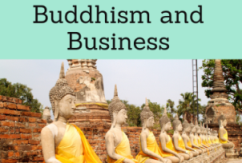Buddhists Schools: Mahayana, Theravada

Theravada, Mahayana, Vajrayana, ZEN Buddhism. Bodhisattva / Arhant
- Buddhist Schools
- Mahayana Buddhism
- Theravada Buddhism
- Vajrayana Buddhism (Lamaist/Tibetan)
- ZEN Buddhism
- Pure Land Buddhism
“May I be a balm to the ill, their healer and servitor, until sickness comes never again;
My being and my pleasures, all my righteousness in the past, present, and future I surrender indifferently, that all creatures may win to their end.” Shantideva

The Subject “Buddhist Schools: Mahayana, Theravada” belongs to the following Online Programs taught by EENI Global Business School:
Course: Buddhism, Ethics and Business.

Doctorate: Ethics, Religion & Business.
Masters: International Business, Religions & Business.
Languages:  or
or  Mahayana Theravada
Mahayana Theravada  Bouddhisme
Bouddhisme  Budismo.
Budismo.
As almost all the religions, Buddhism is not a monolithic block. Throughout its millenarian history different schools have been emerged.
Unlike Christianity, there is not the Papal figure, being the main religious authority the sacred texts (sermons or sutras). After the death of Buddha emerged the first Buddhist schism.
The three largest Buddhist Schools are (figures according to Adherents.com).
1- Mahayana Buddhism (the great way).
- About 185 million of followers, 56% of all the Buddhists
- Central figure: Bodhisattva
- Mahayana Buddhism currently, has a strong presence in China, Tibet, Japan, Korea, Vietnam, and Taiwan
- One of the largest Mahayana schools is the “Pure Land Buddhism”
Zen Buddhism
- If anything characterizes Zen Buddhism (Ch'an) is Taoist influence
- Zen belongs to Mahayana School, and translation would be “Meditation”
- Zen Buddhism is perhaps the most influential in the West
- His vision is based on the so-called “the Flower Sermon of Buddha”
2- Theravada Buddhism (or Hinayana, the “minor way”).
- About 124 million (38% of all the Buddhists)
- Central figure: Arhat
- The main Theravada countries are Sri Lanka, Myanmar, Laos, Thailand, and Cambodia (Southeast Asia)
- The influence of Buddhism Theravada is very latent on these countries
3- Vajrayana (Diamond Vehicle Buddhism).
- 20 million followers (6%)
- Present in Tibet, Bhutan, northern India, Nepal, southwestern China and Mongolia
Arhant/Bodhisattva.
The concept of Arhant/Bodhisattva varies in each Buddhist School, and perhaps is one of the main causes that justify the division between Theravada and Mahayana Buddhism.
- For Theravada Buddhists, this salvation is exclusive to the person; it is an individual spiritual goal, and is reserved for Arhants
- Mahayana Buddhists criticize this narrow vision focused on an individual, for them, the salvation must benefit to mankind. The Bodhisattva who being about to attain the enlightenment, renouncing it, staying in the infinite cycle of rebirths to save humanity
For a Mahayana Buddhist:
Buddha is the Savior of the World and the spiritual guide of humanity.
Sample - Mahayana Buddhism, Theravada, Zen (Buddhist Schools)


(c) EENI Global Business School (1995-2024)
We do not use cookies
Top of this page




